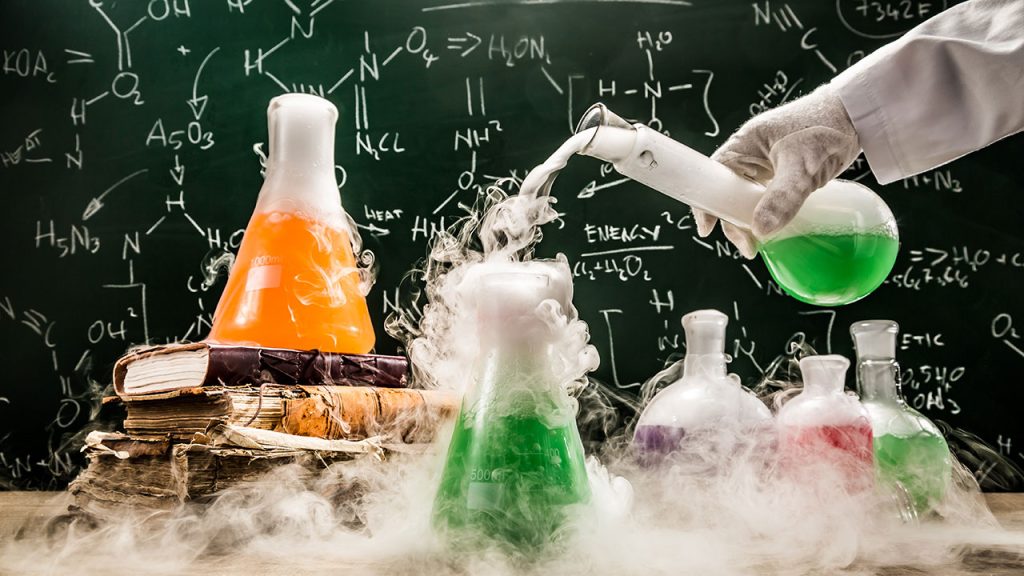A Fordham chemistry professor has helped devise a surprising new use for AI tools like ChatGPT: predicting whether a new material can be made and, if so, explaining how to do it—helping scientists focus on the inventions and projects that show the most promise.
Car Batteries, Electronics, and More
The new method has “a direct impact” on the creation of durable and energy-efficient materials for the future, said the Fordham professor, Joshua Schrier, Ph.D., the Kim B. and Stephen E. Bepler Chair in Chemistry.
“If I have an idea for a new compound … [and] I have a method that tells me you’re very unlikely to be able to make it, then maybe I would focus on other things,” he said. “And similarly, knowing what ingredients I need to put into the pot really removes a lot of the trial and error.”
The technique applies to materials “used in all sorts of things—from the batteries in your cell phone or in your electric car to catalysts for performing chemical reactions more efficiently to electronic materials, alloys, you name it,” Schrier said.
Applying Large Language Models to Chemistry Research
Schrier devised this new tool in collaboration with two scientists at Seoul National University in Korea during a sabbatical last year. Their research was published in February in Angewandte Chemie, a journal of the German Chemical Society, and previously in the Journal of the American Chemical Society.
Schrier and his colleagues initially thought the idea “too crazy to even work,” he said while presenting the research at a Fordham event this spring.
Its simplicity is striking. In the past decade, researchers have investigated possible compounds using complex calculations that require lots of computing time but don’t account for all possible factors. More recently, they’ve used machine learning programs that require specialized expertise and intensive effort to develop.
But the new method relies on a large language model, the kind of thing that powers ChatGPT and other chatbots by predicting the word most likely to follow the preceding one. Once the model is fine tuned to analyze a proposed chemical synthesis, it quickly produces a more accurate prediction than previous methods.
Schrier and his colleagues applied it to 12 compounds that a major carmaker unsuccessfully tried to make in a lab, having run a simulation that indicated it could be done; their new method correctly showed that success was unlikely.
From Explanations of Failure, New Ideas
Other researchers have also been applying large language models to problems in the physical sciences in recent years. One thing that sets Schrier and his colleagues apart is that their model generates explanations of why a compound can or can’t be made, he said.
In so doing, “it moves us beyond just simple prediction and towards actual scientific understanding,” Schrier said. “You don’t only want the right answer, you want to know what are the causes of that right answer. And ideally those causes may lead you to new ideas that you did not have before.”
Their method could help speed the development of batteries for use in sustainable energy, for instance, or specialized alloys for use in everything from spacecraft to jet engines and medical implants, he said.
From Letters and Numbers to Material Science
Schrier is still a little surprised that the technique works, “because we’re taking a step away from drilling into the detailed physics and chemistry of the problem and instead merely looking for patterns in the symbols that describe the compounds,” he said.
But he doesn’t doubt its ability to make an impact on new materials, and therefore, society as a whole.
“Material science is the most important thing for humans—maybe besides theology—in the sense that the great ages of humankind, the Bronze Age, the Stone Age, the Iron Age, are all really described by the types of materials that humans had the ability to manipulate and control,” he said. “And certainly in the last century, the development of plastics, the development of semiconductor materials has been just radically transformative.”
He sees the new technique fueling further transformations. “This has kind of a very general applicability,” he said.

